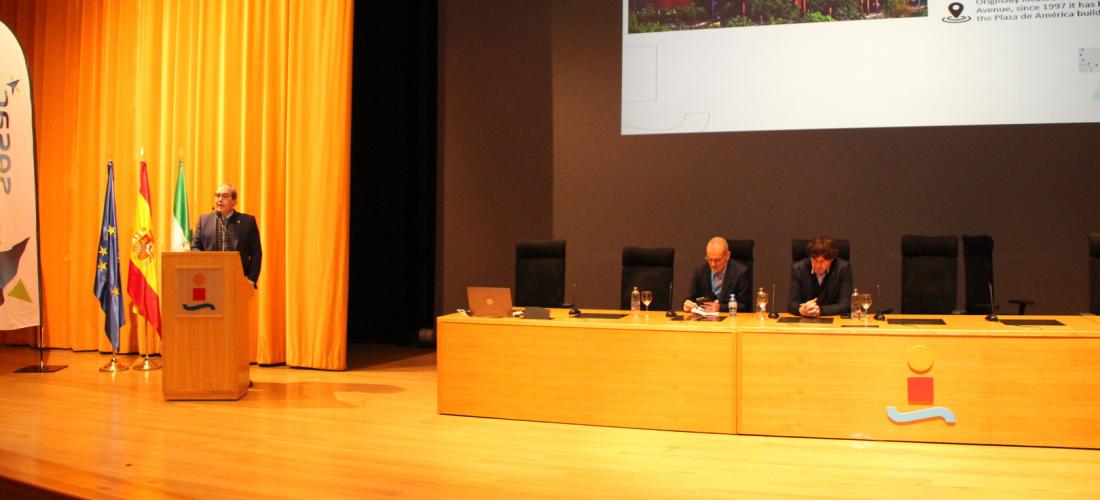The SESAR technological consortium presents solutions to aviation challenges in Seville and to promote the Single European Sky
The SESAR technological consortium presents solutions to aviation challenges in Seville and to promote the Single European Sky
ENAIRE and the Higher Technical School of Engineering of the University of Seville host, from November 27 to 30, the SESAR Innovation Days. This event, promoted every year by SESAR 3 JU, brings together representatives of the aviation industry and university experts who, within the framework of this European Commission program, debate the current advances and research to advance the articulation of the Sky. Unique European hand in hand with innovation and digitalization.
The Digital European Sky Program is the technological pillar of the Single European Sky (SES) and plays a key role in the research, validation and deployment of improved technologies and operating procedures to make European air travel more cost-effective, more environmentally friendly environment and safer. ENAIRE, an active member since its inception in 2009, participates with a strong commitment in 27 projects, of which it leads 4, to validate solutions and identify new challenges.
In today's session, Andreas Boschen, CEO of SESAR 3 JU; Andrés Sáez Pérez, director of the Higher Technical School of Engineering of the University of Seville (ETSi); and Sergio Esteban Roncero, Delegate of the Rector for the Promotion of Technology Transfer in Teaching Innovation of the University of Seville, welcomed the attendees at the ETSi.
Next, Mariluz De Mateo, Director of Strategy and Innovation at ENAIRE, gave a conference in which she addressed the SESAR program and identified the present and future challenges of air navigation. Regarding ENAIRE's role within SESAR, De Mateo explained that “we are fully dedicated to the development of innovative operating procedures and cutting-edge technologies to achieve the objectives of SESAR. The SESAR Program has demonstrated that a public-private partnership, in which all stakeholders collaborate to develop new functionalities, is the best vehicle not only to overcome our current limitations, but also to meet future challenges.”
The celebration of SESAR in Seville has been possible thanks to the management and organization of the ETSi professors of the University of Seville, Damián Rivas, Alfonso Valenzuela and Antonio Franco.
SESAR success
Along these lines, he has highlighted the success of SESAR: “ENAIRE strongly supports SESAR as a catalytic initiative to provide an effective and integrated solution to the known and anticipated shortcomings of the European air traffic management network. “Common challenges need common solutions.”
The director of Strategy and Innovation at ENAIRE has revealed the magnificent air traffic data in Spain during the summer season. In her balance sheet, Mariluz De Mateo has assured that “the number of air operations in Spain currently exceeds the figures for 2019 and an increase of 2% is expected in traffic statistics at the end of this year, which confirms the recovery of the sector. in Spain since the years of the pandemic.”
The Director of Strategy and Innovation of ENAIRE has pointed out some of the challenges identified by SESAR:
• Trajectory-based operations, to improve flight predictability and airspace capacity;
• Remote Tower Services;
• Dynamic balance of air capacity and capacity according to airspace demand;
• virtual centers;
• satellite-based communications, navigation and surveillance technologies;
• extensive tool sets to increase safety on airport runways and
• Interoperability between all interested parties
He has also highlighted the “need to welcome new actors” and to find technological and procedural solutions “to guarantee safe and sustainable air navigation that meets increasing demand.”
The executive director of SESAR 3 JU, Andreas Boschen, highlighted in his speech: “We are delighted to be in Seville for the 2023 edition of the SESAR Innovations Days, where we will showcase innovation and scientific excellence, the two engines of the European Digital Sky. We have the 400 brightest research minds in our industry coming together here this week to challenge conventional boundaries to transform European air traffic management, making it smarter, more resilient and, above all, sustainable. A special thank you to the support of our Spanish members and partners located here, ENAIRE, Indra, University of Seville, Ryanair and Seville Airport”
During the SESAR Innovation Days, technical sessions and conferences are being held and scheduled with the participation of representatives and experts from CRIDA (ENAIRE's R&D&I subsidiary), the manager of the European network EUROCONTROL, the European Commission, the European Security Agency (EASA), the Polytechnic University of Turin, the United States Federal Aviation Agency (FAA), the University of Westminster, the University of Braunschweig, as well as Deep Blue, Ryanair, Seville Airport and Indra, among others.
ENAIRE Southern Region
On the first day, on Monday the 27th, around a hundred people visited the operations room of the Seville Air Control Center, from where the 187,000 km2 of airspace that encompasses Andalusia, the province of Badajoz, part of the City are managed. Real, Albacete and Murcia, the entire bay of Cádiz and the entire western Mediterranean, as well as Ceuta and Melilla. The staff responsible for this work throughout the Southern region is made up of 284 air traffic controllers and 223 engineering and support people.
Carlos Caspueñas, director of the Southern Region of ENAIRE, guided the visit and explained the structure of the airspace managed by ENAIRE, the technical facilities and personnel that make it possible, the extraordinary recovery of traffic in the Southern region as well as the great effort necessary. in the flexible use of airspace. He also highlighted the collaboration with Airbus and the technical improvements that ENAIRE is incorporating.

